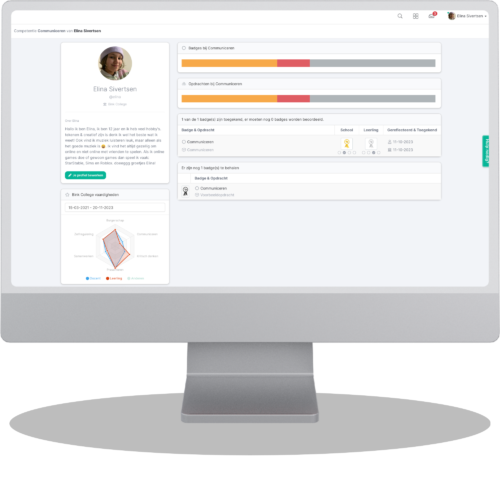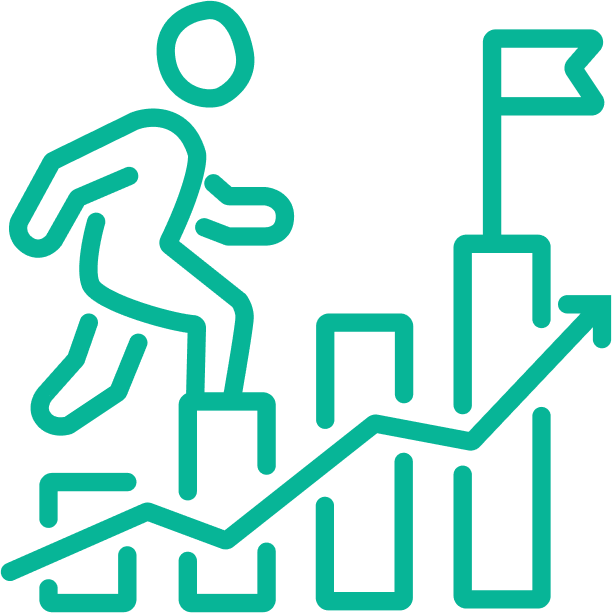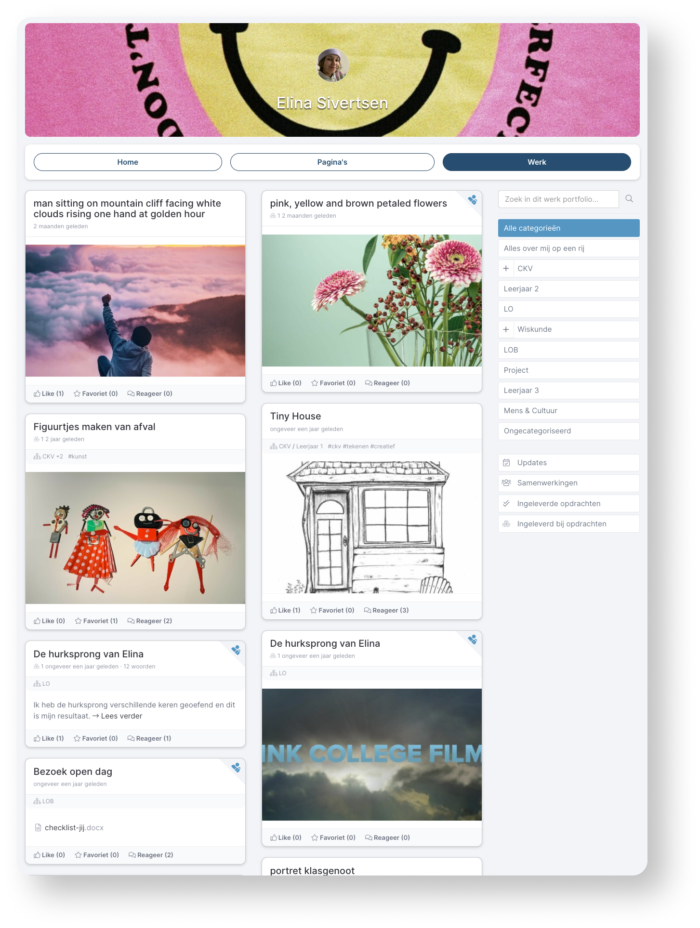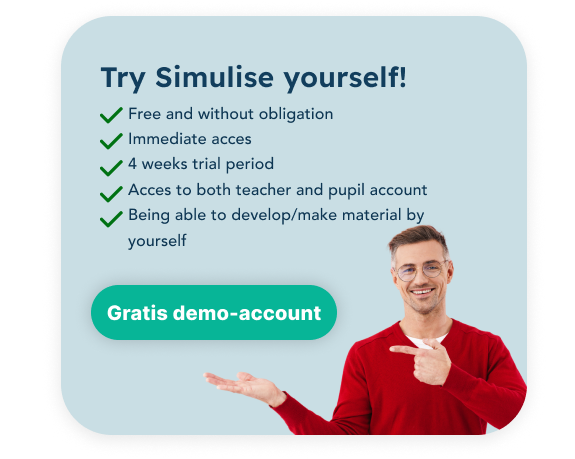Programmatic assessment in Simulise
Programmatic assessment in Simulise provides a total view of data points, low stakes and high stakes. The student is given freedom to build the portfolio, reflect and receive feedback on desired professional competencies.
In addition to the various benefits it offers, it also fits well with the holistic approach to the assessment process. How? Below we have written out some reasons for you.
Long-term evaluation
Programmatic assessment focuses on the long-term development of students. We enable students to record growth and progress over longer periods of time. This helps measure learning outcomes as well as understand the development of skills and knowledge.
Simulise includes authentic evidence, such as projects, papers, presentations and other professional products. This allows teachers to create assessments that better reflect real-world situations rather than just testing theoretical knowledge
Holistic approach
For programmatic assessment, we provide a holistic view of student performance. In addition to standardized tests, Simulise gives the teacher access to a wide variance of work, projects and reflections. You gain a deeper understanding of a student’s skills and competencies.


Frequently Asked Questions
Data points are learning outcomes such as papers, tests, internship reports or teaching moments based on which students reflect and gather feedback. Feedback is collected from internship supervisors, coaches, peers or teachers. Data points answer the questions “Where am I now?” and “Where do I need to go and how do I get there?”
A single data point is a snapshot and thus does not provide sufficient reliability for a decision.
Low stake (feedback) is a snapshot in time. It provides a picture of the student’s progress and standing.
High stake (assessment) is a decision. This determines whether someone may pass, fail or pass. ECs are associated with this high stakes assessment.
A holistic view means a complete picture of the student. Not only what emerges from a test but also the student’s personal characteristics come into play. Holistic is a broad, comprehensive view of the student. Combining many data points together broadens the picture. However, teachers also have their own view of the student and this too is taken into account in a holistic approach.
Professional products are services or products that an (aspiring) professional must be able to provide in the exercise of his profession .
There are different types of professional products such as: Analysis, Advice, Design, Fabrication and Action. (Loose, 2016)
Professional products allow students to demonstrate that they have achieved the learning outcomes.
Formative evaluation
A portfolio built for programmatic testing is dynamic. It can be constantly updated. This allows for formative assessment, where students receive regular feedback and have the opportunity to improve their work throughout the learning process.
Building a portfolio requires self-reflection. Students must reflect on their own work, set goals and provide evidence of their accomplishments. This encourages self-regulation and ownership of the learning process.

Assessment methods
Simulise incorporates various types of evidence, including written work, projects, presentations, reflections and even multimedia elements. These so-called data points provide a picture of student development. This allows teachers to evaluate a wide range of skills and competencies.
Looking at a portfolio gives you a deeper understanding of student learning behavior. You see not only what students did, but also how they learned, what strategies they used and how they improved themselves.
These low-stake images lead to a final assessment (high-stake) by, for example, submitting a portfolio for review.

Professional development
For students in vocational programs, Simulise provides a valuable tool for tracking and presenting their professional development. This can be helpful in job applications and career development.
It can also be used to give stakeholders, such as parents and employers, insight into student performance and development. This promotes transparency and communication about student learning.

Programmatic assessment in Simulise
In short, the use of Simulise in programmatic assessment goes beyond traditional assessment methods. It provides a more complete and contextual view of student learning and achievement. Therefore, making it a valuable tool in the context of an integrated assessment system.



